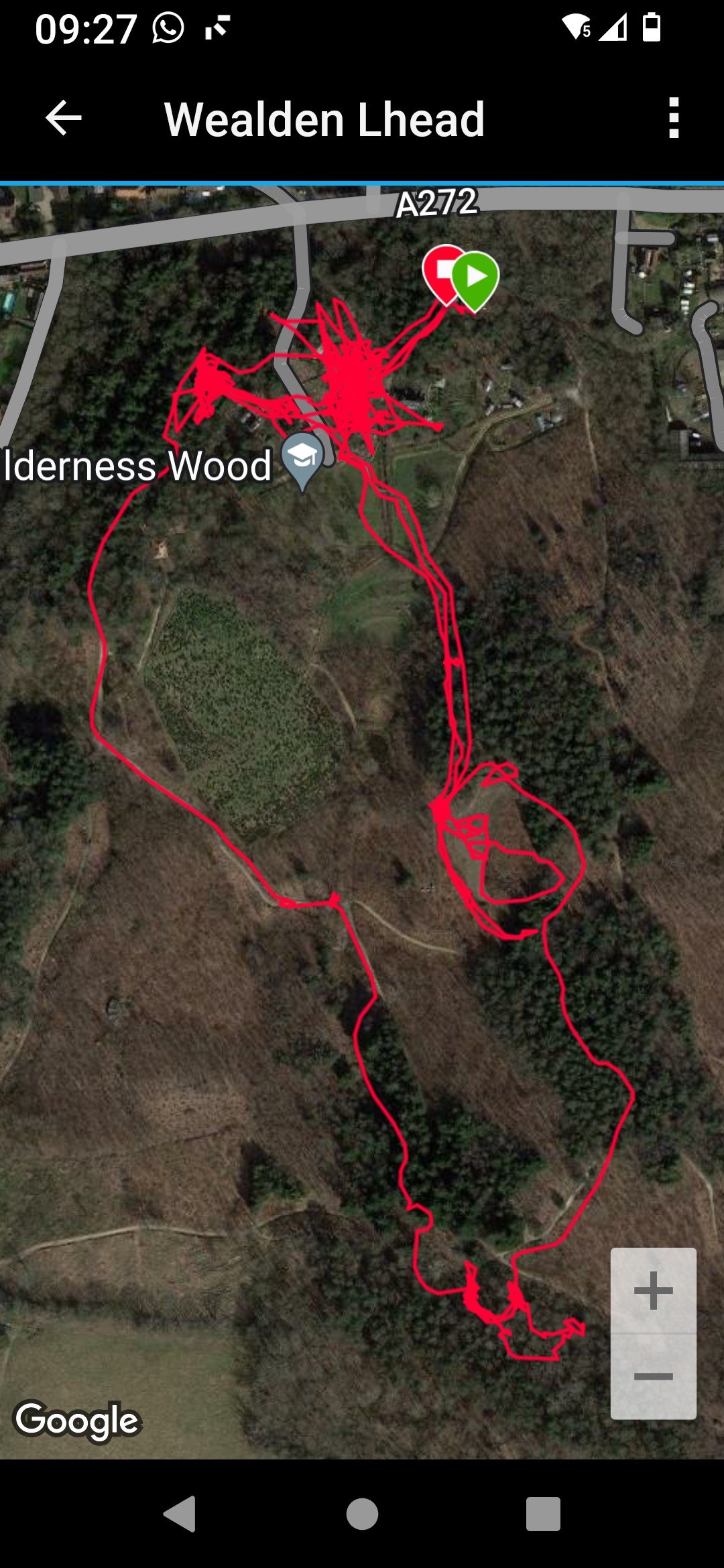Water at Bat Park and the New Ponds
Outline Map of Wilderness Wood
12/12/23
For those interested in learning what is involved in carrying out practical conservation tasks I risk repetition, since I'm doing more of what I did last week - installing a rabbit proof skirt to the existing sheep/deer fence around Bat Park. It will soon be a sheep/deer/rabbit proof fence (but then conservation work does involve quite a bit of repetition).
I worry however, that excluding rabbits means we are at risk of excluding anything else we actually do want in Bat Park. This is one of the vexed questions any wildlife management project throws up. If you exclude or encourage one species what impact will it have on any others? Is the cure potentially worse than the initial malais? Time will tell.
Bat Park itself is looking very soggy from all the recent rain – within 6 months the opposite will become evident, with the open grassland dessicated due to a lack of water. Anything trying to grow here has to deal with the ecological equivalent of a bipolar medical condition. It can be very unpredictable.
Bat Park in December (insert shows it in July)
An hour or so later I have added a further 15 metres to the rabbit fence and made the access gates rabbit proof (I hope!).
Gate rabbit-proofed (I suspect we may need an extra 60cm added)
Heading back for lunch I hear a rushing sound like the approach of a London tube train. I look round but see nothing. It must be the ghost of Mark Isambard Brunel* stalking the woods (*he was the father of the great Victorian engineer Isambard Kingdom Brunel and built the first tube tunnel under the Thames). Five minutes later, once back at The Barn, the heavens open. Evidently the rushing tube train noise I heard was the sound of heavy rain falling upon the conifers at the bottom of the valley.
After lunch I decide to pootle around the rest of Wilderness Wood to see what is going on. Despite the cover from conifers, I’m guaranteed to get wet. Nonetheless, this is the perfect opportunity to see the Wilderness Stream in full spate. One again the presence/absence of water at Wilderness Wood is remarkable, depending upon the time of year visited.
Down at the new ponds they are brim full and at risk of bursting. The ponds intentionally have a bypass channel which can be regulated by the simple expedient of adding or removing logs across it. With the logs removed, the water now discharges freely down the bypass channel, rather than filling the middle and lower ponds.
The bypass channel takes water away from the ponds preventing overbrimming
I can sleep more easily knowing that the mass of water no longer passes through the lowest 2 ponds, being decanted off on a permanent basis – at least until I need to top the ponds up - once they and the stream take on their summer dry season alter ego. It is like dealing with Jekyll and Hyde. But that is precisely what we can expect on a national, if not global, scale over the coming years. Shortages of water during the summer and the fantastic destructive power of excess water in the winter time.
The New Ponds Vision (March 2023) - Upper Pond awaits construction, whilst the Bypass Channel(not labelled) takes water away from Lower Pond and through the Leaky Dam
I am now so wet that I might as well follow the stream as it takes its new course through the woodland downstream of the ponds. Here the stream is broken up by leaky dams and fallen trees to form a braided course through the wood. This is great to see. Previously the stream followed a deep cut to one side of this section of woodland, thus draining it, now the wood is saturated and will be great to monitor over the coming years, with the expectation of it becoming a true wet woodland habitat (alder carr).
The Wilderness Stream now spreads across the woodland floor creating a wet woodland habitat
My latest plan to put to Dan and Emily is to dam up the previous stream channel and turn it into a long thin pond adjacent to the wet woodland.
The previous course of the stream could be dammed to create a permanent pond
Walking through the wood in the middle of a rainstorm actually reveals the places where water naturally accumulates. I realise we could easily have a series of cascading ponds all the way down the valley – in the winter time at least. The overarching strategy has to be one of retaining water wherever possible. Retained water will breath new (wild)life back into the wood.
On returning to the barn I decide to check-out the progress of the new workshop. To my surprise it is finished (well, other than most of the roof sheets, which I gather is scheduled for the new year).
The near-finished workshop roof rests upon shipping containers providing work and storage space
As a footnote: I accidentally left my smart watch recording my movements around Wilderness Wood today. At least the GPS tracking of this lost soul is proof of the blogs’ authenticity. It seems not only wildlife can be tracked by animal ethnologists.
Tracking a conservationist as he wanders aimlessly around Wilderness Wood (Walking with Dinosaurs anyone?)
David Horne - follow my discovery of the British Coastline at www.leggingroundbritain.com









